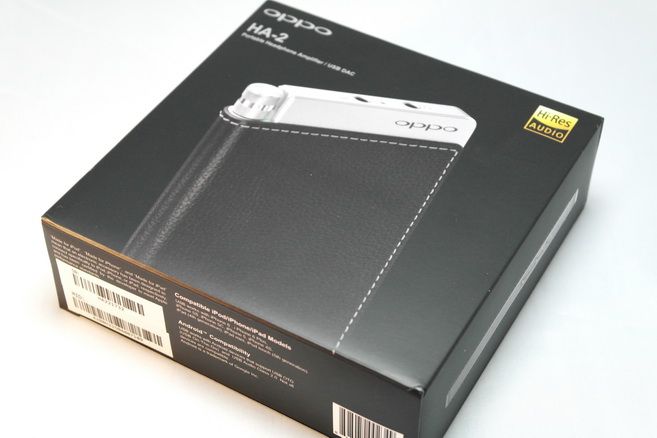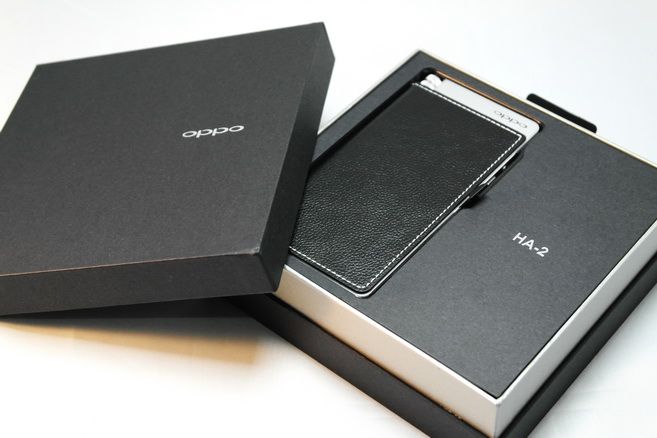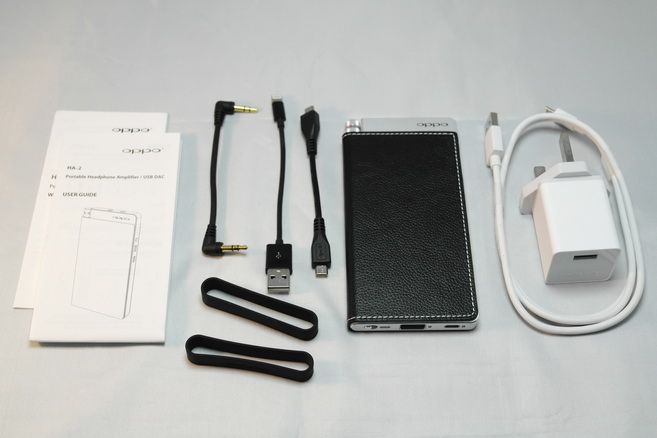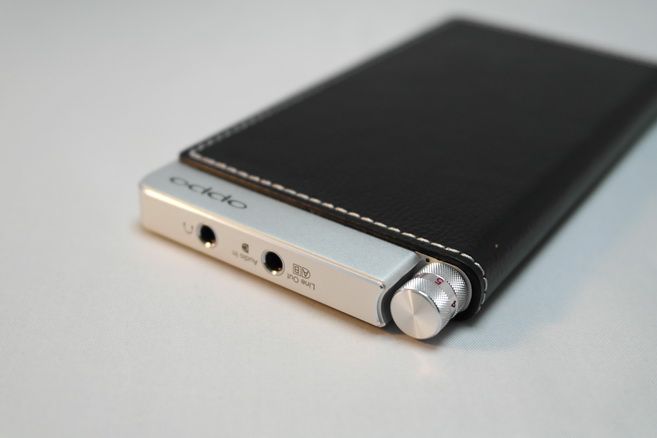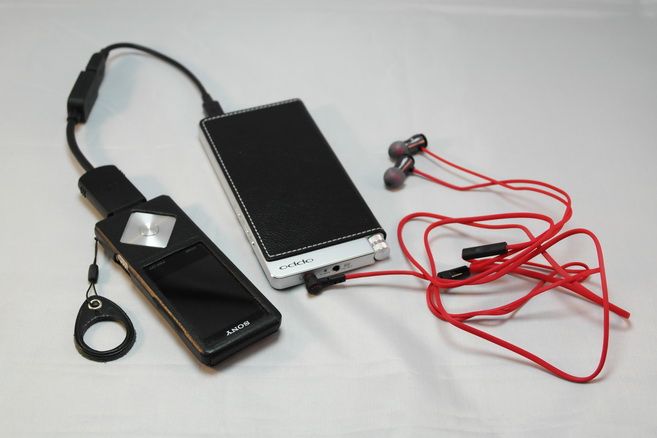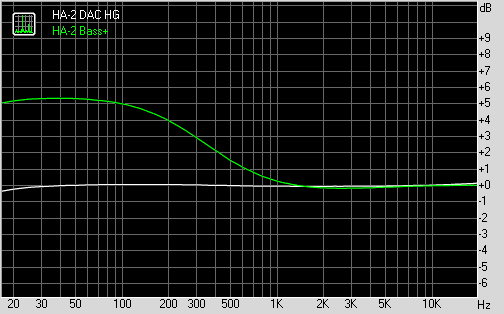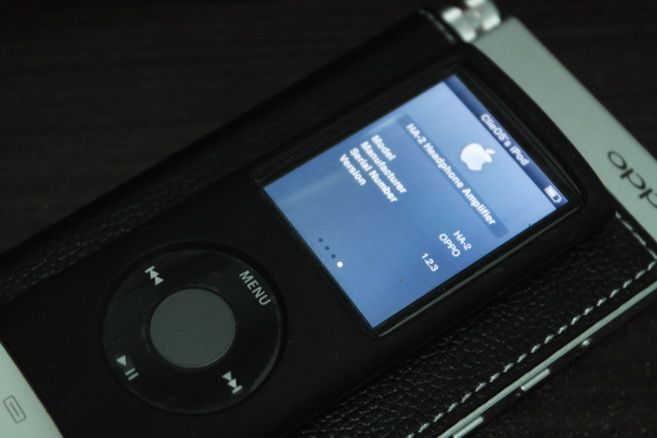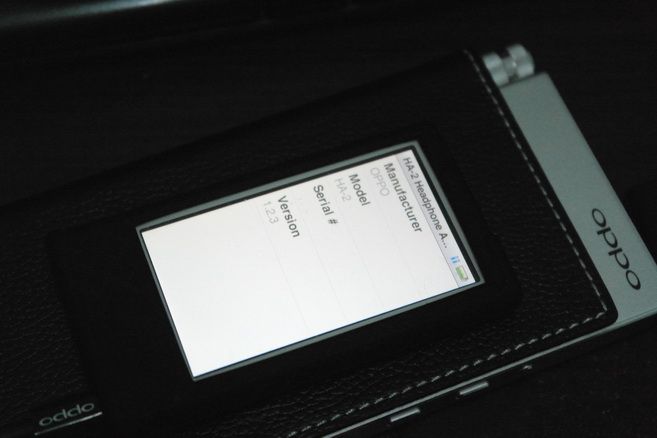Introduction –
Like Xiaomi, Oppo leverage their smartphone mass manufacturing prowess to produce interesting takes on conventional technologies. The AMP/DAC market is an interesting field in that it is simply so diverse. As with many users, my first DAC was the Fiio Q1, a solidly built, well performing device and I was content with it in all aspects. But that was until I heard the Chord Mojo, a completely proprietary device that illuminated acoustic intricacies like no other. But whilst Fiio and Chord provide two very impressive devices at opposing extremities of budget, Oppo bring a new contender with their larger economy of scale and design expertise.
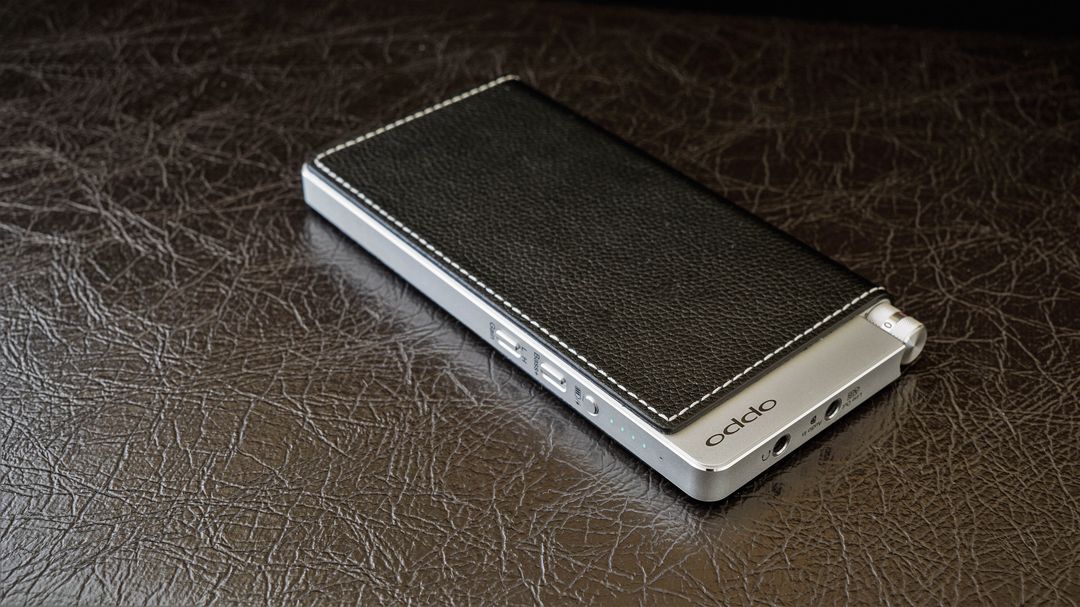
Meet the HA-2, a luxury DAC/AMP that promises seamless smartphone integration with all the convenience of a consumer product but the sonic finesse of an audiophile system. With an RRP of $450 AUD, the HA-2 lies right in the middle between the Fiio E17K and Chord Mojo; but does its performance live up to Oppo’s reputation (earned by their renowned PM headphones) and can the HA-2 compete in a market so honed from years of audio experience, let’s find out.
About Me – Some background, Gear of choice, Preferences and Biases
I generally prefer a slight v-shape to my sound, but still closer to neutral. I like a lot of detail and clarity, but can appreciate a smooth, laid back sound such as that on the X10`s. I prefer a more neutral midrange within a relatively tight tolerance, but I`m probably more forgiving of brightness over darkness. I`m not particularly treble sensitive and can tolerate large amounts without fatigue, though too much ruins the enjoyment. If I use a different eartip/pad/cover during the review I will note that and describe the sound changes.
Read More
Accessories –
Starting with the packaging, Oppo certainly doesn’t disappoint with a very professional design whose darker theme contrasts to the brighter palette assumed by Fiio.


Bold renders adorn the front and right side whilst concise infographics line the left; Oppo also provide a comprehensive list of specifications on the rear.

As one would expect from a manufacturer such as Oppo, it’s similar to unboxing a premium smartphone, which is to say, a very visually impactful experience on a whole.

Like the PM3, the HA-2 lies safely packaged within a hard shell within the display box. Lifting off the top panel users will find the accessories:

It only takes a glance to notice that the HA-2 ships with a very comprehensive list of extras, the most notable perhaps being the charger which is all too often omitted. The quality of these accessories is what you would expect for $450, the cables are well molded and pliable and the stacking bands are even pre-formed to the dimensions of the HA-2 (and thus pretty much any ~5” smartphone). Attention to detail is key here and Oppo certainly delivers.
Design –
The HA-2 makes quite the first impression; the impeccably assembled, leather clad aluminum chassis has the nuance and ergonomics of any flagship smartphone. The subtle chamfers that adorn each edge and the slight countersinking of each port convey the level of thought that went into designing the HA-2.

Whilst some question the leather wrapping (glued on, stitches are for aesthetic purposes only), it does prevent scratching both the HA-2 and your smart device. The leather also provides a really nice feel in the hand, the supple feedback and texture contrasting to the cool metal. As I learnt the hard way, the leather provides just a hint of shock absorption should you drop the heavier device.

Moving onto the aluminum body, the HA-2 is roughly similar in size to the Fiio e18 but is a little slimmer. It`s substantially larger than the E17K and Q1 however (comparison photos below). The interfaces follow an intuitive pattern with the inputs and input switch on the bottom and the headphone and line out ports located on top. The HA-2 communicates through a USB-A or micro-b port when using both the inbuilt DAC and AMP, but accepts a line-in signal through the line-out port when functioning purely as an AMP.
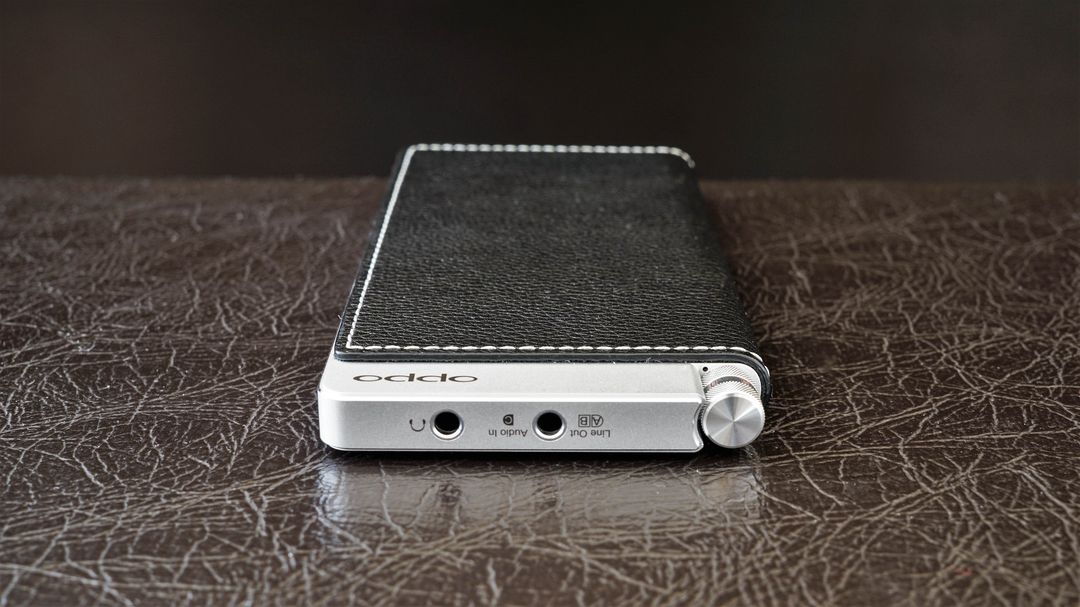
The micro-b port also doubles as the charging port and supports Oppo’s proprietary VOOC fast charging technology. Combined with the potent 5A wall adapter, the HA-2 managed to top off in just over an hour. From full, used as both a DAC and AMP, Oppo claims around 7 hours of batterylife. I managed to scrape 7 hours and 20 minutes in my uses which is good but not great; the E17K offered twice the batterylife whilst the more expensive Chord Mojo produced about the same performance. One feature I did appreciate on the Fiio DACs was the option to toggle USB charging. Since the HA-2 has no such option, it simply charges off any source. This is fine when playing off a laptop or PC but when used with my aging HTC M8, the battery drains quite quickly with no option to use the internal cell of the HA-2 (the HA-2 only charges devices through the USB-A port not the micro-b port). Unlike Fiio DACs, when used with a PC, Oppo also requires the user to download a driver prior to use, but once the driver is installed, the HA-2 is plug and play.

The USB-A port is perhaps the most convenient aspect of the device. The HA-2 has a camera connection kit built-in, allowing it to accept a digital input from all apple devices using only a conventional USB cable, omitting the use of an adapter. It also allows the HA-2 to function as an external power bank, charging devices from its in-built 3000mah battery (@500mah). The source switch allows users to toggle between the three inputs, A, B and C corresponding to USB-A, Micro B and Line-in ports respectively.

The HA-2 has a smooth analogue volume pot with a very grippy texture. Despite this, the pot is still relatively difficult to rotate, reducing accidental volume changes during transit. The pot doubles as the power switch, much like the Fiio Q1 with super clicky feedback. Both channels are also well balanced above 1 of 5 volume notches which will be the useable range for the vast majority of users.

The right side of the HA-2 houses the 4 LEDs that denote remaining charge, a button to activate said LEDs in addition to two switches that toggle low/high gain and bass boost. I appreciate how the battery meter functions even when the device is off. Holding the button enables power bank functionality and an additional blue LED illuminates to denote that the HA-2 is charging your device. I do enjoy the congruency between Oppo’s colour choices with matching pastel green denoting power and charge, it contrasts quite nicely to the black and silver.

So that pretty much sums up the HA-2, it’s a very nicely designed product that is perfectly actualized by strong manufacturing processes. Whereas even the nicely built Fiio e17k has a few defects and limitations with its build, such as slight flex to the chassis and the plastic volume wheel, the HA-2 leverages Oppo’s manufacturing power to create a very discrete device.
Sound –
Utilizing the renowned Saber ES 9018-K2M DAC chip along with an AB amplifier, the HA-2 produces a very clean, detailed sound combined with plentiful output current for a portable amp. The HA-2 also supports a huge array of files and sampling frequencies though I won’t detail them all here. You can see the specifications and supported file types below:

One aspect of sound that tends to change significantly as you head into higher end gear is the soundstage. While the Fiio E17K already had a pretty good soundstage, overall, the HA-2 sounds much more spacious, especially when the track calls for it. Plugged up to my Sennheiser ie800`s, the HA-2 feeds them with hyper accurate imaging and a very broad sense of space. The Saber DAC produces superb instrument separation with fantastic timbre and resolution. The large soundstage of the HA-2 is perhaps one of the main reasons it pairs so well to the Oppo PM3, a generally more intimate sounding headphone.
As for the AMP section, the HA-2 produces a very slight background hiss with my UM 50 Pro’s and Shozy Cygnus but not my ie800’s or Oppo PM3`s. There’s a similar amount of noise as the E17K but it’s a lower frequency hiss that`s less distracting. Both aren’t really noticeable when music is playing and I have to concentrate to hear it. With sensitive monitors, there is a noticeable increase in noise when switching to high gain but users shouldn`t find any issues with high gain for more insensitive headphones. For all effective purposes, the HA-2 is essentially silent. The HA-2 has no troubles driving any of my gear, though admittedly I don`t have anything particularly difficult to drive. The HA-2 does offer plenty of current for lower impedance gear and I can`t approach top volume even on low gain, I use about 1 and a half to 2 of the 5 volume steps.
Comparisons –

At 3x the price, the HA-2 offers large performance gains over the Fiio E17K but the differences are still a lot more nuanced than those you would get by upgrading your earphone/headphone. Starting with the tonality, the HA-2 carries the typical crisp and clear Saber sound whilst the E17K carries Fiio’s warmer house sound. As a result, the E17k produces a slightly fuller low end and a darker midrange. Despite this, sub-bass seems more extended on the HA-2 and bass notes in general are tighter with more resolution. The HA-2 also reveals a more refined mid and high end response. Treble notes in particular sound smoother and less crunchy than the E17K whilst resolving a higher amount of detail. The E17K on behalf of its darker midrange does have a more “isolated” treble response which can appear more defined on first listen, but prolonged comparison reveals that the HA-2 has the superior response in culmination with a more balanced sound on a whole. Overall, the HA-2 just sounds cleaner and more composed than the E17K. It also helps that the HA-2 has a lower output impedance at 0.5ohms vs 1.1ohms on the E17K making the HA-2 better suited for sensitive multi-armature or hybrid earphones.

What the HA-2 lacks is the flexible eQ system of the E17K which allows it to vastly alter its sound signature. The HA-2 does have a bass boost, which I found to be particularly tasteful giving just a slight bump to the very lowest end, mainly the sub-bass. The bass boost functioned almost identically on my Alessandro MS1’s as the tape mod, creating a much more balanced sound from the more anemic Alessandro’s with bowl pads.
But how does the HA-2 stack up against something a little closer in price such as the Chord Mojo? When I first tested the Mojo, what stood out to me most was the sense of effortless detail and black background. The E17K has great detail and dynamics but lacks this element of refinement. So perhaps the biggest advantage of the HA-2 over the e17K is that it reproduces sound almost as effortlessly as the Mojo for just half the price. Whilst the Mojo is the perfect mix between the lush E17K and the clean HA-2, the Oppo is much closer in performance to the Mojo than it is to the E17K despite being between the two in price. The E17K tends to get a bit overwhelmed when the track gets overly complicated, the Oppo retains composure much like the Mojo.
Verdict –

The HA-2 is ultimately a very competitive device. Whilst users perhaps won`t find a particularly substantial upgrade over lower priced DACs from Fiio, the HA-2 nevertheless produces very impressive results, especially at its price. As far as usability goes, the HA-2 excels over almost every competing model with a housing specifically designed for stacking and other more unique features such as the in-built camera connection kit for IOS devices and power bank functionality.
Whilst the HA-2 doesn’t offer groundbreaking proprietary features like the Mojo or a flexible eQ system like the E17K, a thoughtful combination of premium components and meticulous attention to detail create a device with few compromises. The build and functionality are surprisingly well rounded and the HA-2 feels immensely focused. Although the HA-2 is not a cheap device, Oppo make the customer feel as if they`ve gotten their money’s worth.
Accessories – 10/10, Comes with all the cables you could want apart from a 30-pin connector for older Apple devices. Nice stacking bands. Comes with a 5A fast charger and a very low guage charging cable which is a rarity even among $400 smartphones.
Design – 10/10, A great design actualised through perfect manufacturing. Rock solid chassis accented by green LEDs and subtle chamfers. Analogue pot produces no noise and is well weighted. Buttons are super clicky but bass boost and gain switches can be hard to differentiate in the pocket. Powerbank function works well. No option to turn off USB charging is disappointing but can be remedied with the right cable.
Sound Quality – 9.5/10, Largely improved SQ over Fiio DAC’s with a lower output impedance and a more neutral sound signature. Fantastic resolution and sound staging. Top tier detail retrieval whilst remaining composed with impressive refinement. Slight background hiss, brighter earphones can sound slightly overbearing coming from a darker source.
Value – 7.5/10, Still doesn`t meet the outright value of Fiio DAC’s but improved build and sound do somewhat justify the price increase. At the end of the day, the HA-2 is a luxury item but performs like one too.
Overall – 10/10, The low noise level, low output impedance and smooth, well balanced volume control work wonders for sensitive iems whilst offering enough current and voltage in high gain to satisfy larger headphones. Other notable features include the supple authentic leather wrap, superbly machined aluminium body, ultra clean sound and spacious soundstage. The inclusion of VOOC fast charging makes the HA-2 a multi-purpose device, doubling as a decent powerbank. The HA-2 impresses in all aspects.
Thanks for reading! This review was taken from my blog, please have a look for more reviews like this, guides and more:
https://everydaylisteningblog.wordpress.com/2016/09/23/oppo-ha-2-review/
Like Xiaomi, Oppo leverage their smartphone mass manufacturing prowess to produce interesting takes on conventional technologies. The AMP/DAC market is an interesting field in that it is simply so diverse. As with many users, my first DAC was the Fiio Q1, a solidly built, well performing device and I was content with it in all aspects. But that was until I heard the Chord Mojo, a completely proprietary device that illuminated acoustic intricacies like no other. But whilst Fiio and Chord provide two very impressive devices at opposing extremities of budget, Oppo bring a new contender with their larger economy of scale and design expertise.

Meet the HA-2, a luxury DAC/AMP that promises seamless smartphone integration with all the convenience of a consumer product but the sonic finesse of an audiophile system. With an RRP of $450 AUD, the HA-2 lies right in the middle between the Fiio E17K and Chord Mojo; but does its performance live up to Oppo’s reputation (earned by their renowned PM headphones) and can the HA-2 compete in a market so honed from years of audio experience, let’s find out.
About Me – Some background, Gear of choice, Preferences and Biases
I generally prefer a slight v-shape to my sound, but still closer to neutral. I like a lot of detail and clarity, but can appreciate a smooth, laid back sound such as that on the X10`s. I prefer a more neutral midrange within a relatively tight tolerance, but I`m probably more forgiving of brightness over darkness. I`m not particularly treble sensitive and can tolerate large amounts without fatigue, though too much ruins the enjoyment. If I use a different eartip/pad/cover during the review I will note that and describe the sound changes.
Read More
Accessories –
Starting with the packaging, Oppo certainly doesn’t disappoint with a very professional design whose darker theme contrasts to the brighter palette assumed by Fiio.


Bold renders adorn the front and right side whilst concise infographics line the left; Oppo also provide a comprehensive list of specifications on the rear.

As one would expect from a manufacturer such as Oppo, it’s similar to unboxing a premium smartphone, which is to say, a very visually impactful experience on a whole.

Like the PM3, the HA-2 lies safely packaged within a hard shell within the display box. Lifting off the top panel users will find the accessories:
- Manual
- Warranty papers
- 5mm Interconnect
- OTG cable (Android)
- USB A to Lightning cable (IOS)
- Two stacking bands
- Micro B charging cable
- 5A Oppo VOOC AC Fast Charger

It only takes a glance to notice that the HA-2 ships with a very comprehensive list of extras, the most notable perhaps being the charger which is all too often omitted. The quality of these accessories is what you would expect for $450, the cables are well molded and pliable and the stacking bands are even pre-formed to the dimensions of the HA-2 (and thus pretty much any ~5” smartphone). Attention to detail is key here and Oppo certainly delivers.
Design –
The HA-2 makes quite the first impression; the impeccably assembled, leather clad aluminum chassis has the nuance and ergonomics of any flagship smartphone. The subtle chamfers that adorn each edge and the slight countersinking of each port convey the level of thought that went into designing the HA-2.

Whilst some question the leather wrapping (glued on, stitches are for aesthetic purposes only), it does prevent scratching both the HA-2 and your smart device. The leather also provides a really nice feel in the hand, the supple feedback and texture contrasting to the cool metal. As I learnt the hard way, the leather provides just a hint of shock absorption should you drop the heavier device.

Moving onto the aluminum body, the HA-2 is roughly similar in size to the Fiio e18 but is a little slimmer. It`s substantially larger than the E17K and Q1 however (comparison photos below). The interfaces follow an intuitive pattern with the inputs and input switch on the bottom and the headphone and line out ports located on top. The HA-2 communicates through a USB-A or micro-b port when using both the inbuilt DAC and AMP, but accepts a line-in signal through the line-out port when functioning purely as an AMP.

The micro-b port also doubles as the charging port and supports Oppo’s proprietary VOOC fast charging technology. Combined with the potent 5A wall adapter, the HA-2 managed to top off in just over an hour. From full, used as both a DAC and AMP, Oppo claims around 7 hours of batterylife. I managed to scrape 7 hours and 20 minutes in my uses which is good but not great; the E17K offered twice the batterylife whilst the more expensive Chord Mojo produced about the same performance. One feature I did appreciate on the Fiio DACs was the option to toggle USB charging. Since the HA-2 has no such option, it simply charges off any source. This is fine when playing off a laptop or PC but when used with my aging HTC M8, the battery drains quite quickly with no option to use the internal cell of the HA-2 (the HA-2 only charges devices through the USB-A port not the micro-b port). Unlike Fiio DACs, when used with a PC, Oppo also requires the user to download a driver prior to use, but once the driver is installed, the HA-2 is plug and play.

The USB-A port is perhaps the most convenient aspect of the device. The HA-2 has a camera connection kit built-in, allowing it to accept a digital input from all apple devices using only a conventional USB cable, omitting the use of an adapter. It also allows the HA-2 to function as an external power bank, charging devices from its in-built 3000mah battery (@500mah). The source switch allows users to toggle between the three inputs, A, B and C corresponding to USB-A, Micro B and Line-in ports respectively.

The HA-2 has a smooth analogue volume pot with a very grippy texture. Despite this, the pot is still relatively difficult to rotate, reducing accidental volume changes during transit. The pot doubles as the power switch, much like the Fiio Q1 with super clicky feedback. Both channels are also well balanced above 1 of 5 volume notches which will be the useable range for the vast majority of users.

The right side of the HA-2 houses the 4 LEDs that denote remaining charge, a button to activate said LEDs in addition to two switches that toggle low/high gain and bass boost. I appreciate how the battery meter functions even when the device is off. Holding the button enables power bank functionality and an additional blue LED illuminates to denote that the HA-2 is charging your device. I do enjoy the congruency between Oppo’s colour choices with matching pastel green denoting power and charge, it contrasts quite nicely to the black and silver.

So that pretty much sums up the HA-2, it’s a very nicely designed product that is perfectly actualized by strong manufacturing processes. Whereas even the nicely built Fiio e17k has a few defects and limitations with its build, such as slight flex to the chassis and the plastic volume wheel, the HA-2 leverages Oppo’s manufacturing power to create a very discrete device.
Sound –
Utilizing the renowned Saber ES 9018-K2M DAC chip along with an AB amplifier, the HA-2 produces a very clean, detailed sound combined with plentiful output current for a portable amp. The HA-2 also supports a huge array of files and sampling frequencies though I won’t detail them all here. You can see the specifications and supported file types below:

One aspect of sound that tends to change significantly as you head into higher end gear is the soundstage. While the Fiio E17K already had a pretty good soundstage, overall, the HA-2 sounds much more spacious, especially when the track calls for it. Plugged up to my Sennheiser ie800`s, the HA-2 feeds them with hyper accurate imaging and a very broad sense of space. The Saber DAC produces superb instrument separation with fantastic timbre and resolution. The large soundstage of the HA-2 is perhaps one of the main reasons it pairs so well to the Oppo PM3, a generally more intimate sounding headphone.
As for the AMP section, the HA-2 produces a very slight background hiss with my UM 50 Pro’s and Shozy Cygnus but not my ie800’s or Oppo PM3`s. There’s a similar amount of noise as the E17K but it’s a lower frequency hiss that`s less distracting. Both aren’t really noticeable when music is playing and I have to concentrate to hear it. With sensitive monitors, there is a noticeable increase in noise when switching to high gain but users shouldn`t find any issues with high gain for more insensitive headphones. For all effective purposes, the HA-2 is essentially silent. The HA-2 has no troubles driving any of my gear, though admittedly I don`t have anything particularly difficult to drive. The HA-2 does offer plenty of current for lower impedance gear and I can`t approach top volume even on low gain, I use about 1 and a half to 2 of the 5 volume steps.
Comparisons –

At 3x the price, the HA-2 offers large performance gains over the Fiio E17K but the differences are still a lot more nuanced than those you would get by upgrading your earphone/headphone. Starting with the tonality, the HA-2 carries the typical crisp and clear Saber sound whilst the E17K carries Fiio’s warmer house sound. As a result, the E17k produces a slightly fuller low end and a darker midrange. Despite this, sub-bass seems more extended on the HA-2 and bass notes in general are tighter with more resolution. The HA-2 also reveals a more refined mid and high end response. Treble notes in particular sound smoother and less crunchy than the E17K whilst resolving a higher amount of detail. The E17K on behalf of its darker midrange does have a more “isolated” treble response which can appear more defined on first listen, but prolonged comparison reveals that the HA-2 has the superior response in culmination with a more balanced sound on a whole. Overall, the HA-2 just sounds cleaner and more composed than the E17K. It also helps that the HA-2 has a lower output impedance at 0.5ohms vs 1.1ohms on the E17K making the HA-2 better suited for sensitive multi-armature or hybrid earphones.

What the HA-2 lacks is the flexible eQ system of the E17K which allows it to vastly alter its sound signature. The HA-2 does have a bass boost, which I found to be particularly tasteful giving just a slight bump to the very lowest end, mainly the sub-bass. The bass boost functioned almost identically on my Alessandro MS1’s as the tape mod, creating a much more balanced sound from the more anemic Alessandro’s with bowl pads.
But how does the HA-2 stack up against something a little closer in price such as the Chord Mojo? When I first tested the Mojo, what stood out to me most was the sense of effortless detail and black background. The E17K has great detail and dynamics but lacks this element of refinement. So perhaps the biggest advantage of the HA-2 over the e17K is that it reproduces sound almost as effortlessly as the Mojo for just half the price. Whilst the Mojo is the perfect mix between the lush E17K and the clean HA-2, the Oppo is much closer in performance to the Mojo than it is to the E17K despite being between the two in price. The E17K tends to get a bit overwhelmed when the track gets overly complicated, the Oppo retains composure much like the Mojo.
Verdict –

The HA-2 is ultimately a very competitive device. Whilst users perhaps won`t find a particularly substantial upgrade over lower priced DACs from Fiio, the HA-2 nevertheless produces very impressive results, especially at its price. As far as usability goes, the HA-2 excels over almost every competing model with a housing specifically designed for stacking and other more unique features such as the in-built camera connection kit for IOS devices and power bank functionality.
Whilst the HA-2 doesn’t offer groundbreaking proprietary features like the Mojo or a flexible eQ system like the E17K, a thoughtful combination of premium components and meticulous attention to detail create a device with few compromises. The build and functionality are surprisingly well rounded and the HA-2 feels immensely focused. Although the HA-2 is not a cheap device, Oppo make the customer feel as if they`ve gotten their money’s worth.
Accessories – 10/10, Comes with all the cables you could want apart from a 30-pin connector for older Apple devices. Nice stacking bands. Comes with a 5A fast charger and a very low guage charging cable which is a rarity even among $400 smartphones.
Design – 10/10, A great design actualised through perfect manufacturing. Rock solid chassis accented by green LEDs and subtle chamfers. Analogue pot produces no noise and is well weighted. Buttons are super clicky but bass boost and gain switches can be hard to differentiate in the pocket. Powerbank function works well. No option to turn off USB charging is disappointing but can be remedied with the right cable.
Sound Quality – 9.5/10, Largely improved SQ over Fiio DAC’s with a lower output impedance and a more neutral sound signature. Fantastic resolution and sound staging. Top tier detail retrieval whilst remaining composed with impressive refinement. Slight background hiss, brighter earphones can sound slightly overbearing coming from a darker source.
Value – 7.5/10, Still doesn`t meet the outright value of Fiio DAC’s but improved build and sound do somewhat justify the price increase. At the end of the day, the HA-2 is a luxury item but performs like one too.
Overall – 10/10, The low noise level, low output impedance and smooth, well balanced volume control work wonders for sensitive iems whilst offering enough current and voltage in high gain to satisfy larger headphones. Other notable features include the supple authentic leather wrap, superbly machined aluminium body, ultra clean sound and spacious soundstage. The inclusion of VOOC fast charging makes the HA-2 a multi-purpose device, doubling as a decent powerbank. The HA-2 impresses in all aspects.
Thanks for reading! This review was taken from my blog, please have a look for more reviews like this, guides and more:
https://everydaylisteningblog.wordpress.com/2016/09/23/oppo-ha-2-review/

